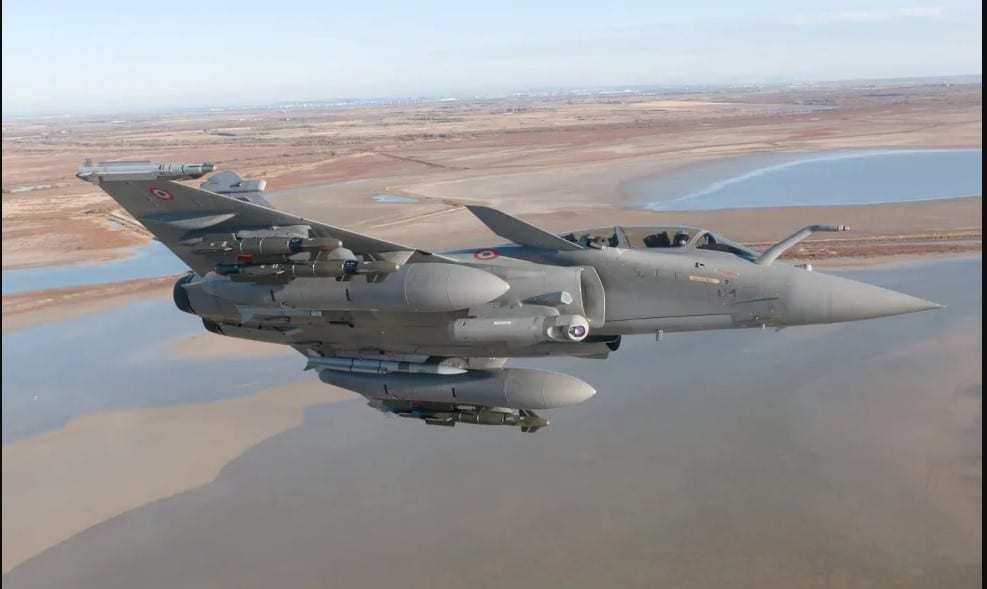Aviation
Dassault delivers first Rafale f4 to French air force

With the delivery of the first aircraft modified to the F4.1 standard to the French Air Force, the Dassault Rafale, the primary fighter jet of France, achieved a new milestone. The Military Aviation Expertise Center at Air Base 118 in Mont-de-Marsan received the first Rafale to the F4.1 standard on Thursday, March 2.
10 Most Expensive Fighter Jets In The World(Opens in a new browser tab)
The Rafale F4.1 standard is the latest version of the Rafale fighter jet developed by the French company Dassault Aviation. This upgrade is a step ahead of the previous F3R standard and includes several improvements in terms of capability, versatility, and connectivity.
One of the key upgrades in the Rafale F4.1 is the integration of the new Meteor air-to-air missile, which has a longer range and improved performance compared to its predecessors. The Rafale F4.1 also features improved connectivity with other aircraft, ground stations, and satellites, which allows for better coordination and situational awareness in the battlefield.
Indian Navy to buy Rafale M fighter plane after IAF?(Opens in a new browser tab)
Another major improvement is the integration of the Talios targeting pod, which provides high-resolution imagery and laser designation for precision strikes. The Rafale F4.1 also includes enhancements to the aircraft’s electronic warfare system, which increases its ability to detect and respond to threats. Other upgrades in the Rafale F4.1 include improvements to the cockpit displays and controls, upgrades to the engines and avionics, and improvements to the aircraft’s airframe and maintenance systems.
The first steps in the development of the F4 standard were taken in 2019, when Dassault and then-Armed Forces Minister Florence Parly agreed to a €2 billion ($2.12 billion) deal. Pilots will be supported by a significant technical advance in the future’s high-intensity wars. Based on the arrival of a second Rafale F4.1 by next week, the device will go undergo a number of trial stages in the upcoming months.

Aviation
Boeing, Antonov to Collaborate on Defense Projects

– MOU represents Boeing’s commitment to work with Ukrainian industry
– Includes exploring opportunities for collaborating on in-country support of Unmanned Aerial Systems
A Memorandum of Understanding was signed today by Boeing and Antonov Company to investigate potential collaboration on defense-related projects.
“We’re happy to keep collaborating with the Antonov Company to help Ukraine’s economic development and expansion,” stated Ted Colbert, CEO and president of Boeing Defence, Space, & Security.
Airbus and the Antonov An-225: The Best Partnership:Click here
“This agreement demonstrates our ongoing efforts to find more opportunities to work with Ukrainian industry, which was underscored by our signing of the Ukrainian Defence Industry Compact earlier this year.”
The areas of potential collaboration identified in the agreement consist of training, logistical support and overhaul services for tactical Unmanned Aerial Systems utilized by the Ukrainian Armed Forces, which includes the ScanEagle. In addition, the companies will also explore opportunities for Antonov to provide engineering support to Boeing.
The six largest cargo aircraft ever built in the aviation industry:Click here
“A strong, innovative, and efficient defense industry is key to sustainable economic development and national security, and we are extremely excited to collaborate with Boeing,” said Ievhen Gavrylov, CEO of Antonov Company.
This agreement brings a whole new level of opportunity to implement the latest and most effective solutions – in addition to the possibility of future projects with Boeing in the aerospace and defense industry.”
-

 Travel1 week ago
Travel1 week agoAir India to Expand US Operations with Three New Routes After a Decade
-

 Travel2 weeks ago
Travel2 weeks agoWhy We Should Avoid These Stamps in a Passport
-

 Airlines1 month ago
Airlines1 month agoInvestigations Reveal Fake Chinese Titanium in Boeing and Airbus Jets
-

 Tech4 weeks ago
Tech4 weeks agoChina’s CATL Plans 1,800-Mile Electric Plane Launch by 2027
-

 Airport3 days ago
Airport3 days agoTop 10 Largest Airports in the World by Size
-

 Aerospace4 weeks ago
Aerospace4 weeks agoChina’s Fighter Jets Turn Wings into Autonomous Drones
-

 Airlines4 days ago
Airlines4 days agoAir India Rolls Out A350s for Delhi-New York JFK and Newark Routes
-

 Defence3 weeks ago
Defence3 weeks agoBoeing Enhances Chinook with New Engines and Block II Upgrades at $96 Million







